The legendary Loch Ness monster was photographed for the first time on this day, November 12 in 1933 in Loch Ness, Scotland. On this occasion, we look back at a few noteworthy sightings of other such creatures that have went on to become pop culture phenomenons, sparking debate about their existence

Loch Ness Monster:
Popularly known as 'Nessie', the creature is reputedly a huge animal that inhabits the Loch Ness in the Scottish Highlands. Popular interest and belief in its existence has varied since it was first brought to the world's attention in 1933 in a photograph that was taken by Hugh Gray. Evidence of its existence is anecdotal, with minimal and much-disputed photographic material and sonar readings.
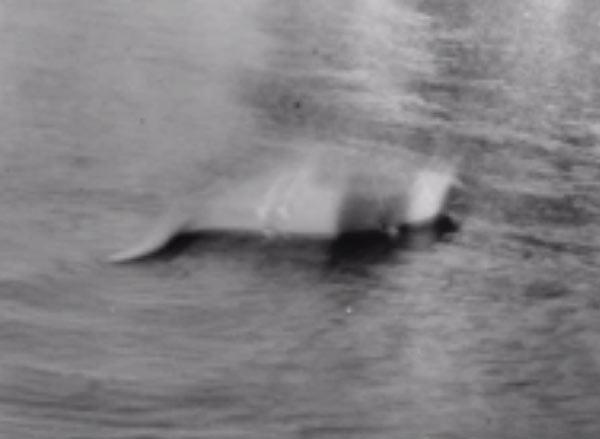
The first-ever photograph of the Loch Ness monster that was taken by Hugh Gray. Courtesy/ YouTube
Hugh Gray's 1933 photograph, which is said to be the first known image allegedly taken of the appeared to show a creature with a long tail and thick body at the surface of the loch. The image is blurred suggesting the animal was splashing. Four stumpy-looking objects on the bottom of the creature's body might possibly be a pair of appendages, such as flippers. Although critics have claimed that the photograph is of a dog swimming towards the camera (possibly carrying a stick), researcher Roland Watson rejects this interpretation and suggests there is an eel-like head on the right side of the image.
ADVERTISEMENT
Following this another notable sighting, which came to be known as the 'Surgeon's Photograph' taken in 1934 by a 'Dr. Wilson' has since been proved as a hoax when in 1993 Christian Spurling, stepson of the flamboyant movie maker and big game hunter "Duke" Wetherell, admitted he'd made the "monster" out of some plastic and a clockwork, tinplate, toy submarine.
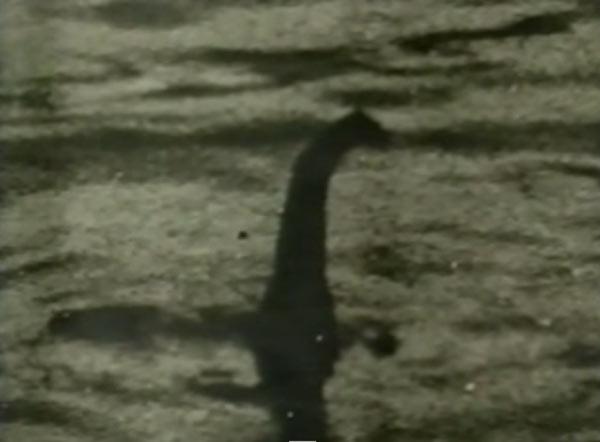
The 1934 surgeon's photograph of the Loch Ness monster that was later confirmed to be a hoax. Courtesy/ YouTube
Recent sightings
>> Gordon Holmes, a 55-year-old lab technician, captured video of what he said was "this jet black thing, about 14 metres (46 ft) long, moving fairly fast in the water." The video taken on 26 May 2007 was later aired on television several times and Holmes was also interviewed. Adrian Shine, a marine biologist at the Loch Ness 2000 centre in Drumnadrochit, Scotland described the footage as among "the best footage he has ever seen."
Gordon Holmes' credibility has however been the subject of doubt by various sources, since he has a history of reporting sightings of cryptozoological creatures, and sells a self-published book and DVD claiming evidence for fairies. His video also has no other objects for size comparison. Adrian Shine had also suggested during his interview that the footage showed an otter, seal or water bird.
>> Skipper George Edwards published a photograph on 3rd August 2012 claiming to be, "The most convincing Nessie photograph ever", which he claimed to have taken on 2nd November 2011. The image shows a hump out of the water which, according to him remained so for five to ten minutes.
However, other researchers of the Loch Ness phenomena have questioned the authenticity of the photograph. A subsequent investigation by Loch Ness researcher, Steve Feltham, suggests that the object in the water is in fact a fibreglass hump used previously in a National Geographic documentary that Edwards had participated in. Researcher Dick Raynor has also questioned Edwards's claims about finding a deeper bottom to Loch Ness, which he refers to as "Edwards Deep". He also found inconsistencies between Edwards's claims of the location and conditions of the photograph and the actual location and weather conditions of that day.
>> 50-year-old tourist David Elder's video taken on 27 August 2013 showed a "mysterious wave" in the loch. He believed that the wave was being produced by a 4.5 m (15 ft) "solid black object" just under the surface of the water. Elder was taking a picture of a swan at the pierhead of Fort Augustus, at the south-west end of the loch, when he captured the movement. He added that "The water was very still at the time and there were no ripples coming off the wave and no other activity on the water. Sceptics suggested that the wave may have been the result of a gust of wind.
>> On 19 April 2014, it was reported that Apple Maps was showing what appeared to be the monster close to the surface of the loch when a man named Andrew Dixon who was browsing a map of his home town at the time took a moment to take a look at the loch. Possible explanations for the image are that it could be the wake of a boat, a seal causing ripples or a floating log.
Chupacabra:
The name of this legendary beast is said to be derived from its reported habitat of attacking and drinking the blood of livestock especially goats. Chupacabra is Spanish for 'Goat Sucker'. It is rumoured to inhabit parts of the Americas, with the first sightings reported in Puerto.
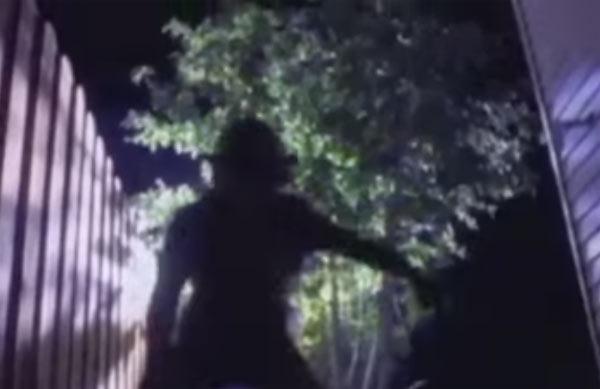
The real appearance of the Chupacabra is the subject of great debate due to the conflicting views of people who have reported sightings of the creature. Pic for representational purposes. Courtesy/YouTube
Animals said to resemble Chupacabras have been witnessed as early as 1995 in Puerto Rico , and have since been reported as far north as Maine in the United States, and as far south as Chile, and even being spotted outside the Americas in countries like Russia and The Philippines, but many of the reports have been disregarded as uncorroborated or lacking evidence. Biologists and wildlife management officials view the chupacabra as a contemporary legend. Sightings in northern Mexico and the southern United States have been verified as wild dogs or coyotes afflicted by mange.
A few notable sightings
July 2004: A rancher near San Antonio in the American state of Texas killed a hairless dog-like creature which was attacking his livestock. This animal, initially given the name the Elmendorf Beast, was later determined by DNA assay conducted at University of California, Davis to be a coyote with demodectic or sarcoptic mange.
In Coleman, Texas, a farmer named Reggie Lagow caught an animal in a trap he set up after the deaths of a number of his chickens and turkeys. The animal was described as resembling a mix of hairless dog, rat, and kangaroo.
September 18, 2009: Taxidermist Jerry Ayer sold the Blanco Texas Chupacabra to the Lost World Museum. The museum, as reported in the Syracuse Post Standard on 9/26/09, is placing the creature on display as it works with an unnamed university to have the remains tested.
December 18, 2010: A man named Mark Cothren shot and killed an animal having large ears, whiskers, a long tail, and about the size of a house cat that he could not recognize and feared in Nelson County located in the American state of Kentucky. Cothren says he spoke with the Kentucky Department of Fish and Wildlife Resources and handed over the preserved animal for further analysis.
There have been numerous encounters with so-called animals as recent as early 2014 that were believed to be Chupacabras but nearly all of them have been confirmed to be either a dog, coyoto, fox or wolf suffering from mange.
The Jersey Devil:
The creature said to inhabit the Pine Barrens of Southern New Jersey, United States, is often described as a flying biped with hooves, but there are many different variations. The common description is that of a kangaroo-like creature with the head of a goat, leathery bat-like wings, horns, small arms with clawed hands, cloven hooves and a forked tail. It has been reported to move quickly and often is described as emitting a "blood-curdling scream.
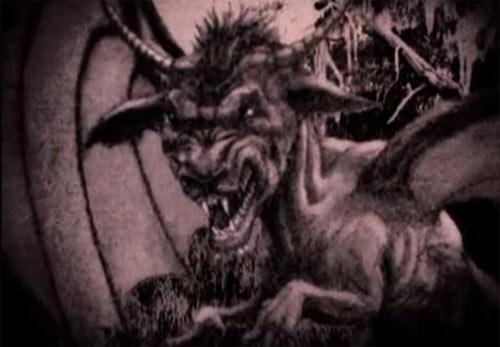
An illustration of the Jersey Devil based on its many sightings. Courtesy/YouTube
A popular origin of the story is as follows: "It was said that Mother Leeds had 12 children and, after finding she was pregnant for the 13th time, stated that this one would be the Devil. In 1735, Mother Leeds was in labor on a stormy night. Gathered around her were her friends. Mother Leeds was supposedly a witch and the child's father was the Devil himself. The child was born normal, but then changed form. It changed from a normal baby to a creature with hooves, a goat's head, bat wings and a forked tail. It growled and screamed, then killed the midwife before flying up the chimney. It circled the villages and headed toward the pines. In 1740 a clergy exorcised the demon for 100 years and it wasn't seen again until 1890."
Sightings
Joseph Bonaparte, elder brother of Emperor Napoleon, is also claimed to have witnessed the Jersey Devil while hunting on his Borden town estate around 1820.
According to a legend of unknown origin, while visiting the Hanover Mill Works to inspect his cannonballs being forged, Commodore Stephen Decatur sighted a flying creature flapping its wings and fired a cannonball directly upon it to no effect.
During the week of January 16 through 23, 1909, newspapers of the time published hundreds of claimed encounters with the Jersey Devil from all over the state. Among alleged encounters publicized that week were claims the creature "attacked" a trolley car in Haddon Heights and a social club in Camden. Police in Camden and Bristol, Pennsylvania supposedly fired on the creature to no effect.
The widespread newspaper coverage led to a panic throughout the Delaware Valley prompting a number of schools to close and workers to stay home. During this period, it is rumored that the Philadelphia Zoo posted a $10,000 reward for the creature's dung. The offer prompted a variety of hoaxes, including a kangaroo with artificial wings.
Claims of a corpse matching the Leeds Devil's description arose in Greenwich in December 1925. A local farmer shot an unidentified animal as it attempted to steal his chickens. Afterward, he claimed that none of 100 people he showed it to could identify it.
On July 27, 1937 an unknown animal "with red eyes" seen by residents of Downingtown, Pennsylvania was compared to the Jersey Devil by a reporter for the Pennsylvania Bulletin of July 28, 1937.
Bigfoot/Sasquatch:
An ape-like creature that is believed to inhabit forests, mainly in the Pacific Northwest region of North America, the Bigfoot is usually described as a large, hairy, bipedal humanoid.

A representational picture of the Bigfoot/Sasquatch based on descriptions gathered from some sightings
Most scientific experts consider it a combination of folklore, misidentification and hoax rather than a living animal. This is due to lack of physical evidence and the large large numbers of creatures that would be necessary to maintain a breeding population. The term sasquatch, an alternative name for Bigfoot is an anglicized derivative of the Halkomelem word sásq'ets.
A few notable Bigfoot sightings
In 1924, Prospector Albert Ostman claimed to have been abducted by Bigfoot and held captive by the creatures in British Columbia.
In 1941, a woman named Jeannie Chapman and her children said they had escaped their home when a 7.5 feet (2.3 m) tall Sasquatch approached their residence in Ruby Creek, British Columbia.
The most famous Bigfoot or Sasquatch footage, known as the Patterson–Gimlin film was taken in 1967 by a duo named Roger Patterson and Robert Gimlin. Bob Heironimus, an acquaintance of Patterson's, revealed many years later that he had worn an ape costume for the making of the film. However, Patterson and Gimlin have claimed that the footage is indeed original and that they sought the opinion of various experts to examine the film, including some unnamed technicians who specialize in special effects of Hollywood films.
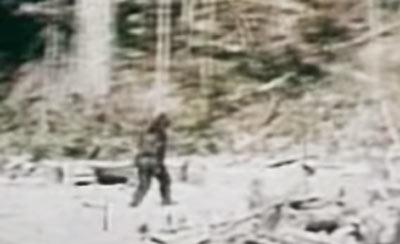
A still from the Patterson–Gimlin film. Courtesy/YouTube
On September 16, 2007, hunter Rick Jacobs captured an image of a supposed Sasquatch by using an automatically triggered camera attached to a tree, prompting a spokesperson for the Pennsylvania Game Commission to say that it was probably an image of "a bear with a severe case of mange." The picture was taken near the town of Ridgway, Pennsylvania, in the Allegheny National Forest.
Yeti:
The legendary Yeti also known as the Abominable Snowman, is an ape-like being said to be taller than a human. It is said to inhabit and has been sighted in the Himalayan region of Nepal and Tibet. The names Yeti and Meh-Teh are commonly used by the people indigenous to the region, and are part of their history and mythology. Stories of the Yeti first emerged as a facet of Western popular culture in the 19th century.
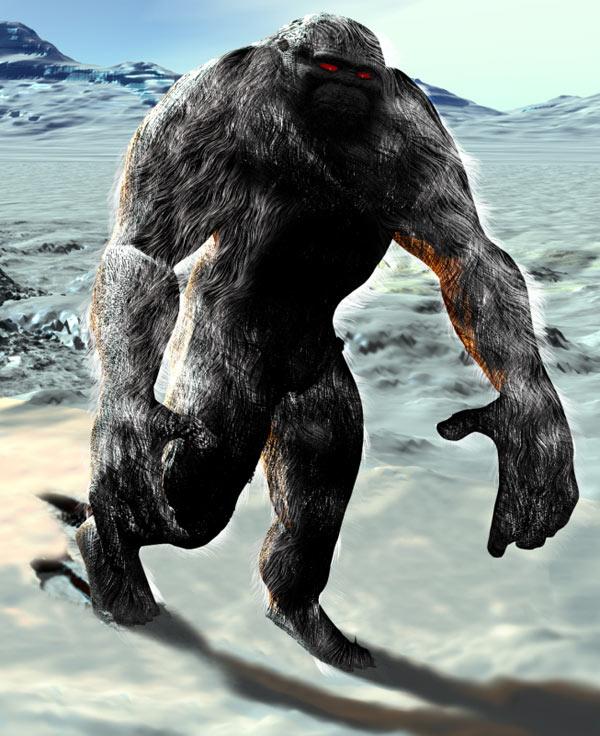
An illustration of the Yeti based on some sightings. Picture used for representational purposes
The scientific community generally regards the Yeti as a legend, given the lack of conclusive evidence. Analysis of samples associated with claimed yetis found a sequence of mitochondrial DNA that matched a sample from an ancient polar bear jawbone found in Norway, that dates back to between 40,000 and 120,000 years ago.
Notable Yeti encounters and sightings
Numerous encounters with Yeti-like creatures have been reported over the years. The frequency of reports increased during the early 20th century, when Westerners began making determined attempts to scale the many mountains in the area and occasionally reported seeing odd creatures or strange tracks.
In 1925, N. A. Tombazi, a photographer and member of the Royal Geographical Society, writes that he saw a creature at about 15,000 ft (4,600 m) near Zemu Glacier. Tombazi later wrote that he observed the creature from about 200 to 300 yd (180 to 270 m), for about a minute.
While attempting to scale Mount Everest in 1951, Eric Shipton took photographs of a number of large prints in the snow, at about 6,000 m (20,000 ft) above sea level. These photos have been subject to intense scrutiny and debate. Some argue they are the best evidence of Yeti's existence, while others contend the prints are those of a mundane creature that have been distorted by the melting snow.
In 1970, British mountaineer Don Whillans claimed to have witnessed a creature when scaling Annapurna peak. According to Whillans, while scouting for a campsite, he heard some odd cries which his Sherpa guide attributed to a Yeti's call. That night, he saw a dark shape moving near his camp. The next day, he observed a few human-like footprints in the snow, and that evening, viewed with binoculars a bipedal, ape-like creature for 20 minutes as it apparently searched for food not far from his camp.
There is a famous Yeti hoax, known as the Snow Walker Film. The footage was created for the American show, Paranormal Borderland, ostensibly by the show's producers.
Misidentification of Himalayan wildlife has been proposed as an explanation for some Yeti sightings, including the Chu-Teh, a Langur monkey living at lower altitudes, the Tibetan blue bear, the Himalayan brown bear or Dzu-Teh, also known as the Himalayan red bear. Some have also suggested the Yeti could actually be a human hermit.
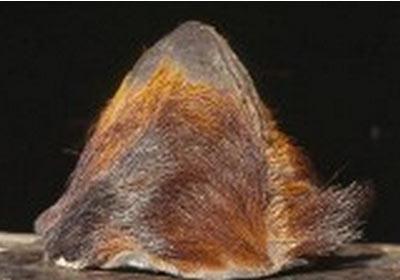
Purported Yeti scalp at Khumjung monastery in Nepal. Pic/AFP
The Yeti scalp
In 1959, actor James Stewart, while visiting India, reportedly smuggled remains of a supposed Yeti, the so-called Pangboche Hand, by concealing it in his luggage when he flew from India to London.
In 1960, mountaineer Sir Edmund Hillary mounted an expedition to collect and analyze physical evidence of the Yeti. He sent a supposed Yeti "scalp" from the Khumjung monastery to the West for testing, whose results indicated the scalp was manufactured from the skin of a serow, a goat-like Himalayan antelope.
 Subscribe today by clicking the link and stay updated with the latest news!" Click here!
Subscribe today by clicking the link and stay updated with the latest news!" Click here!







